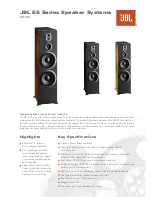
The Interface Solution Experts
7
SPA
Site-Programmable RTD &
Thermocouple Limit Alarm Trips
Alarm Terminology
Before setting up the SPA, or incorporating the unit in
your application, Moore Industries suggests that all us-
ers take a few moments to become familiar with some
of the terms associated with the use of process instru-
mentation alarms. Figure 1 illustrates the way the SPA
alarms operate.
The Trip Point is the process input level at which the
user wants an alarm relay to change state, typically
going into an alarm condition, or “tripping”. In the SPA,
the user sets the trip point for each installed relay.
High/Low Alarms; High Alarms trip when the process
input goes above the trip point. Low Alarms trip when
the process input drops below the trip point. Each
of the SPA outputs can be set by the user to function
independently as either high or low alarms.
Latching and Non-latching Alarms; once tripped, a
latching alarm remains in alarm until the input returns
to a non-alarm level AND is manually reset. Non-
latching alarms return to a non-alarm state whenever
the process input returns to the Reset Point. The SPA
relays can be set by the user to function as either
latching or non-latching.
Figure 1. How Alarms Work with the Process Input
The Reset Point is the process input level at which
the user wants an alarm relay to change state, typi-
cally going from alarm to non-alarm. The reset point
is not necessarily the same as the trip point, because
most applications call for a buffer zone or “Deadband”
around the trip point to allow for minute fluctuations in
the process input. In the SPA, the reset point is deter-
mined by the deadband setting. Latching SPA alarms
will not “clear” unless the reset point has been reached
or passed AND the manual reset contacts have been
shorted.
The Deadband is the range in which an alarm remains
tripped even after the process input has returned to
or passed the trip point. Deadband is not required.
When it is not incorporated into an alarm application,
the trip point and reset point are the same. The dead-
band of the SPA is set by the user.
Failsafe Alarms are de-energized when tripped, en-
ergized when the process input is at a non-alarm level.
Non-failsafe Alarms are energized whenever tripped,
de-energized when the process input is at a
non-
alarm
level. The relays in the SPA can be switched from
failsafe to non-failsafe at any time by the user.
Normal is the term used to describe the “shelf-state” of
relay contacts. The contacts of a Normally Open relay
are open (infinite resistance) when the relay is not
energized. The contacts of a Normally Closed relay
are open when the relay is energized (closed when not
energized).
NOTE:
Sometimes a non-alarm input level is referred
to as being in a “normal” condition. This
practice is intentionally avoided in this manual.
Do not confuse the term “normal”, as in
Normally Open or Normally Closed, with a
non-alarm input condition. In this manual,
“normal” is an exclusive reference to the shelf
state or quiescent state of an alarm’s relay
contacts, whether open or closed.
HIGH ALARM
TRIP POINT
LOW ALARM
TRIP POINT
DEADBAND
RESET
DEADBAND
RESET
IN ALARM
IN NON-ALARM
TIME








































